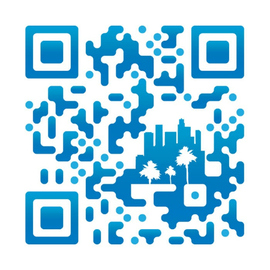 Last week at SES San Francisco, one of the many prevailing themes was local search. This isn’t terribly new as the conference has covered it for years, including panels I’ve sat on or moderated over the last decade.
Last week at SES San Francisco, one of the many prevailing themes was local search. This isn’t terribly new as the conference has covered it for years, including panels I’ve sat on or moderated over the last decade.
There are perennial issues like local ranking factors and listings accuracy in the face of fragmentation. But the conversation is also increasingly being taken over by mobile and social.
These have always lived within the conference agenda, though not necessarily tied to local. But their connection is clear, as this column for the past few years has fed on the convergence of social, local, and mobile (SoLoMo).
A few stats that I heard repeated throughout the conference triangulate and underscore the opportunity:
- Smart phone penetration is currently a third of U.S. mobile subscribers (Nielsen actually pegs it at 38 percent).
- Mobile searches are currently about 15 percent of total search query volume in the U.S.
- 20-50 percent of mobile searches have local intent. (This is a broad range because of different definitions of local intent. Google’s figure is 40 percent).
Bring it all together and you have a perfect storm for mobile advertising in search, display, and SMS; and across mobile web and native apps. But the main point is how mobile ad revenues will increasingly come from local – something we’ve argued for some time.
See Me, Hear Me
Some of this might not be terribly new, but the usage numbers and growth continue to surprise us and indicate opportunities. Hardware evolution likewise continues to shine a light where opportunities lie, such as voice and visual search.
Angie Schottmuller, founder of Interactive Artisan, gave a great presentation on the nascent area (at least in the U.S.) of barcodes. What are they, how are they evolving, and what does it all mean for mobile local advertising and search?
They can be the last mile of local search and we’re seeing them pop up more in magazines, billboards, store windows, and even bikinis. Through this, there’s greater awareness of what they are and do — a key part of the chicken-and-egg game that throttles their adoption.
Starting on a basic level, barcodes come in a few different flavors. There are simple UPC codes, prevalent for years in retail environments. These include enough data for 30 characters — all you really need for product name and pricing.
Then there are QR codes such as Microsoft Tag, gaining popularity for their ability to pack much more data. This can include not only a long URL to a landing page, but other things like the ability to tell your smartphone which app to open (i.e. video, map, CSV file).
Because it packs a bigger punch, you can also get creative with QR codes. “Creative” here means brand messaging, which you’ll often see infused with some codes. This is possible without obscuring the data says Schottmuller, a good opportunity to extend your branding.
“There’s redundancy built in to the data,” she said. “If the barcode is damaged, folded or blocked, a partial scan will still read it.”
Dos and Don’ts
QR code marketing is also becoming easier by the day with code generators such as Google’s. And there are a growing number of QR code readers and apps such as QuickMark (recommended), Scanbuy, MSFT Tag and RedLaser.
But there are still ways to go wrong, Schottmuller warns. Some are obvious but still elude overzealous marketers. For example, even with the data integrity you don’t want to make it harder on users to get a scan. You only get a few tries before they give up.
“Don’t make the barcode too small,” she says. “Auto focus cameras still aren’t ubiquitous in smartphones. Anything less than 1″ x 1″ can’t be scanned by most phones.”
You also don’t want to put them inside reflective product packaging that causes glare. And since barcodes will usually link to something, don’t put them in the subway where there’s no connection.
Don’t do it at the end of a 30-second TV spot that precludes any human ability to get a phone out that fast. For the same reason, don’t put a barcode on a highway billboard.
With the above caveats, Schottmuller recommends QR codes where there are captive audiences. Waiting in line is an obvious example. Another she mentioned half jokingly: inside bathroom stall doors.
But don’t laugh… data indicates lots of smartphone bathroom use. You can’t get much more local than that.
For more QR code best practices, see Schottmuller’s post, “Top 14 Things Marketers Need to Know About QR Codes.”
 Last week at
Last week at